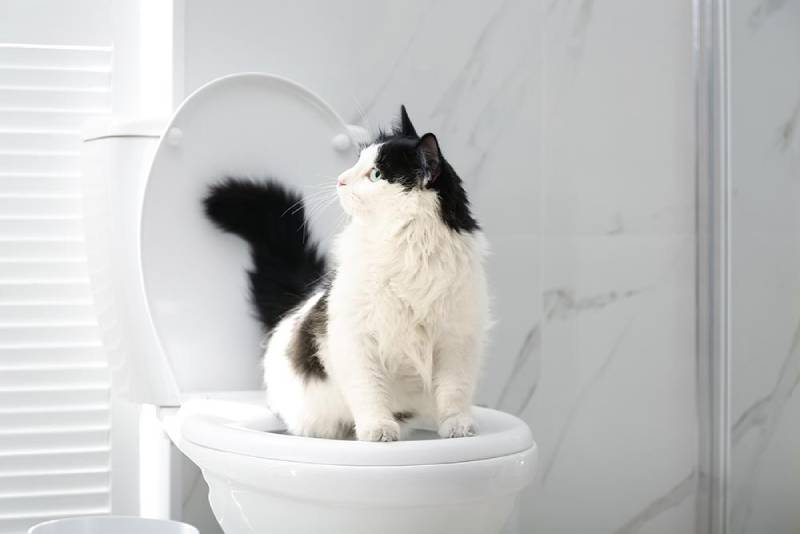The content below in relation to How to Dispose of Cat Poop and Litter Without Plastic Bags is totally enjoyable. Check it out yourself and decide what you think about it.

Intro
As cat proprietors, it's vital to be mindful of how we throw away our feline friends' waste. While it may seem convenient to flush feline poop down the commode, this practice can have detrimental effects for both the environment and human wellness.
Ecological Impact
Flushing cat poop presents harmful virus and parasites right into the water, posturing a significant danger to marine environments. These pollutants can adversely affect marine life and compromise water quality.
Wellness Risks
In addition to ecological concerns, flushing cat waste can likewise present health and wellness threats to human beings. Pet cat feces might consist of Toxoplasma gondii, a bloodsucker that can cause toxoplasmosis-- a possibly serious health problem, particularly for expectant women and individuals with damaged body immune systems.
Alternatives to Flushing
The good news is, there are safer and much more liable methods to dispose of cat poop. Consider the following options:
1. Scoop and Dispose in Trash
One of the most typical technique of dealing with feline poop is to scoop it into an eco-friendly bag and toss it in the trash. Make certain to use a devoted litter scoop and throw away the waste promptly.
2. Usage Biodegradable Litter
Go with naturally degradable feline trash made from materials such as corn or wheat. These trashes are eco-friendly and can be safely gotten rid of in the garbage.
3. Bury in the Yard
If you have a backyard, take into consideration burying pet cat waste in an assigned area far from vegetable gardens and water resources. Make certain to dig deep sufficient to avoid contamination of groundwater.
4. Install a Pet Waste Disposal System
Invest in a pet waste disposal system specifically made for cat waste. These systems use enzymes to break down the waste, reducing smell and environmental influence.
Verdict
Liable family pet ownership extends past supplying food and shelter-- it also includes proper waste monitoring. By refraining from flushing cat poop down the bathroom and selecting different disposal approaches, we can minimize our ecological footprint and secure human wellness.
Why Can’t I Flush Cat Poop?
It Spreads a Parasite
Cats are frequently infected with a parasite called toxoplasma gondii. The parasite causes an infection called toxoplasmosis. It is usually harmless to cats. The parasite only uses cat poop as a host for its eggs. Otherwise, the cat’s immune system usually keeps the infection at low enough levels to maintain its own health. But it does not stop the develop of eggs. These eggs are tiny and surprisingly tough. They may survive for a year before they begin to grow. But that’s the problem.
Our wastewater system is not designed to deal with toxoplasmosis eggs. Instead, most eggs will flush from your toilet into sewers and wastewater management plants. After the sewage is treated for many other harmful things in it, it is typically released into local rivers, lakes, or oceans. Here, the toxoplasmosis eggs can find new hosts, including starfish, crabs, otters, and many other wildlife. For many, this is a significant risk to their health. Toxoplasmosis can also end up infecting water sources that are important for agriculture, which means our deer, pigs, and sheep can get infected too.
Is There Risk to Humans?
There can be a risk to human life from flushing cat poop down the toilet. If you do so, the parasites from your cat’s poop can end up in shellfish, game animals, or livestock. If this meat is then served raw or undercooked, the people who eat it can get sick.
In fact, according to the CDC, 40 million people in the United States are infected with toxoplasma gondii. They get it from exposure to infected seafood, or from some kind of cat poop contamination, like drinking from a stream that is contaminated or touching anything that has come into contact with cat poop. That includes just cleaning a cat litter box.
Most people who get infected with these parasites will not develop any symptoms. However, for pregnant women or for those with compromised immune systems, the parasite can cause severe health problems.
How to Handle Cat Poop
The best way to handle cat poop is actually to clean the box more often. The eggs that the parasite sheds will not become active until one to five days after the cat poops. That means that if you clean daily, you’re much less likely to come into direct contact with infectious eggs.
That said, always dispose of cat poop in the garbage and not down the toilet. Wash your hands before and after you clean the litter box, and bring the bag of poop right outside to your garbage bins.
https://trenchlesssolutionsusa.com/why-cant-i-flush-cat-poop/

I was made aware of that article about Can You Flush Cat Poop Down The Toilet? through an acquaintance on another domain. Sharing is nice. Helping others is fun. Thanks a lot for your time. Don't forget to visit our blog back soon.
Schedule Today